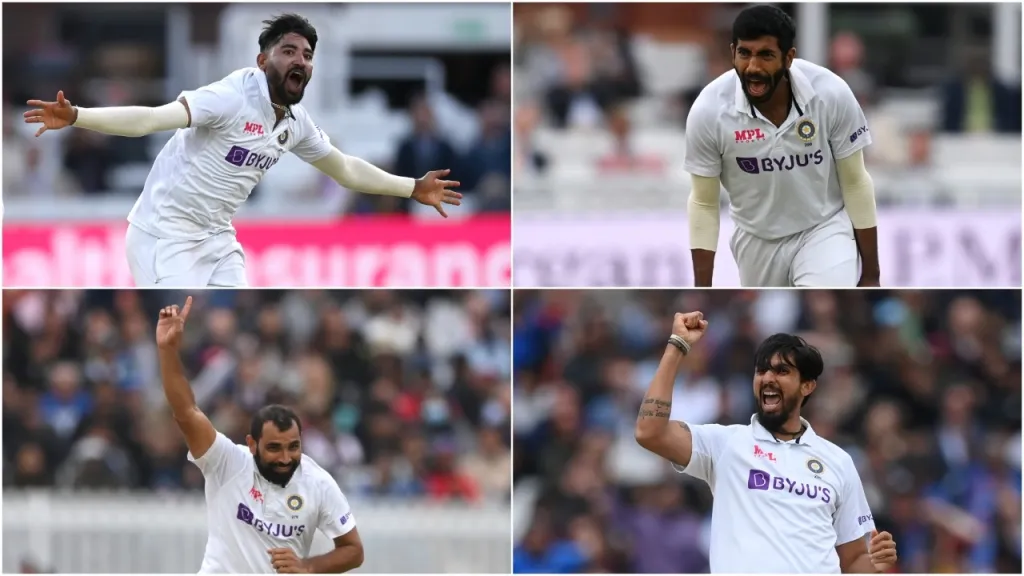Since taking over as captain of India, Virat Kohli has made one thing very clear: he wanted to win Test matches overseas, and for that, he needed fast bowlers. His thoughts were echoed by head coach Ravi Shastri and bowling coach Bharat Arun, who believed in the motto of taking the pitch out of the equation.
Even the greatest spinners and swing bowlers need pitches to thrive. Pace can help overcome that hurdle.
Kohli’s first major challenge in Test cricket came in 2018, when India toured South Africa, England and Australia in the same calendar year.
The South Africa tour in 2018 was memorable for many reasons. Jasprit Bumrah, largely a limited-overs specialist by then (but with superb numbers in First-class cricket), made his Test debut in Cape Town.
The plan had been laid down well in advance, when India toured Sri Lanka in 2017. Shortly after taking over, Shastri and Arun made it clear that they wanted Bumrah in the Test cricket mix.
Bumrah took four wickets on debut. In all, he took 14 wickets in the series, at 25.21. Since then, he has never looked back, and now has 101 wickets in 24 Tests at 22.79, emerging as the spearhead of the Indian attack across formats.
India lost the series 1-2, but they took all 60 wickets across six innings. Of these, 50 went to the fast bowlers – a rarity in their spin-heavy history.
Mohammed Shami, Bumrah’s partner-in-crime for some time now, finished with 15 scalps at 17.07. He was the joint-leading wicket-taker, alongside Vernon Philander and Kagiso Rabada. Ishant Sharma, who has redeemed himself under Kohli’s captaincy, also fetched impressively, taking eight wickets in two matches at 18.75.
The England tour in 2018 was relatively unpleasant. India lost 1-4, but Ishant (18 wickets at 24.28) and Bumrah (14 at 25.93) did not disappoint. Shami took 16 wickets (at 38.88) as well, but perhaps they did not seem as lethal as they were in South Africa.
However, when India travelled to Australia in 2018, the trio bowled like a well-oiled machine. They shared 48 wickets (Bumrah 21, Shami 16, Ishant 11) to help India beat Australia 2-1, making Kohli the first Asian captain to win a Test series in Australia.
In the meantime, they have found more options in Mohammed Siraj, Umesh Yadav and Shardul Thakur, who have grabbed every opportunity with both hands whenever they got the chance to impress.
Siraj started playing under Arun in 2016/17, when the latter was Hyderabad’s coach. He claimed 41 wickets in nine Ranji matches in that campaign, but had to wait three more years to receive his maiden Test cap, in Australia, in 2020/21 – only when both Ishant and Shami sat out with injuries.
And Siraj delivered. He chose not to attend his father's funeral due to strict quarantine rules in Australia, and finished as the leading wicket-taker (13 at 29.54) among his teammates.
After a solitary opportunity against West Indies, in 2018, Shardul Thakur found his mojo in that Australia series as well. He took seven wickets in the famous Gabba Test, where India registered a triumph for the ages.
Since then till date, whatever Thakur has touched has seemed to turn into gold, even with bat.
Of course, Kohli does not care if his bowlers can bat or not. He prioritises bowlers, particularly fast bowlers. And he insists on packs of them, in threes or fours.
This August, Kohli omitted R. Ashwin, then India’s fourth-highest wicket-taker, for four consecutive Test matches in England. He fielded a quartet of fast bowlers instead. The decision drew criticism, citing Kohli’s stubbornness. Arun subsequently justified that the decision was taken based ‘the conditions and pitches’.
Ishant was uncharacteristically insipid (five wickets at 34.80) on the England tour, but Umesh Yadav, his replacement, snared six wickets at 22.67 at the Oval Test. India took a 2-1 lead in the five-match series before the last match was cancelled due to Covid-19 scares.
Bumrah (18 at 20.83), Shami (11 at 27.55), Siraj (14 at 30.71) and Umesh all enjoyed bowling at fast in England.
Considering India’s depth in the fast bowling unit, this can be Ishant’s last international assignment if he fails to match his own lofty standards. He looked ordinary in the recently concluded New Zealand Tests as well, at home.
But still, even eight years ago, no one could have predicted dominance of this level from Indian fast bowlers outside the subcontinent. They have conquered Australia in Australia, England in England, and over a decade ago, New Zealand in New Zealand (in 2008/09). The only remaining target is to beat South Africa in their own backyard.
India have toured South Africa seven times so far, of which they have lost six, drawing only in 2010/11. But now, for the first time, the odds are in their favour. They recently ended New Zealand’s 10-match unbeaten streak with a 372-run win – their biggest ever victory by runs – at Wankhede, and have now been bolstered by the return of Bumrah, Shami, Siraj, Ishant, Thakur, and Umesh after much-needed breaks.
The Indian fast bowlers – to quote Cheteshwar Pujara – ‘have been the difference between the two sides’ in the last 12 months, particularly away from home. They have struggled in the past in South Africa, but now, they will be high on confidence when they come out all guns blazing in the Boxing Day Test match at the SuperSport Park in Centurion.
The mission is about to begin.

